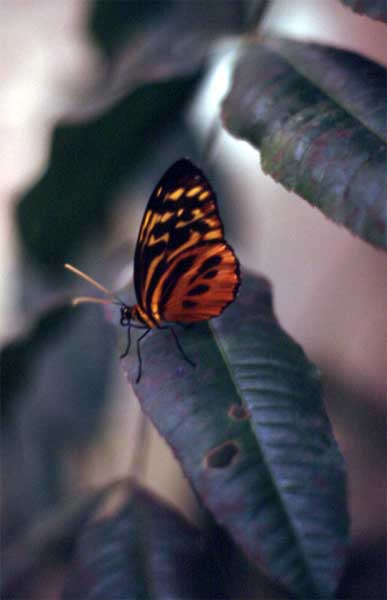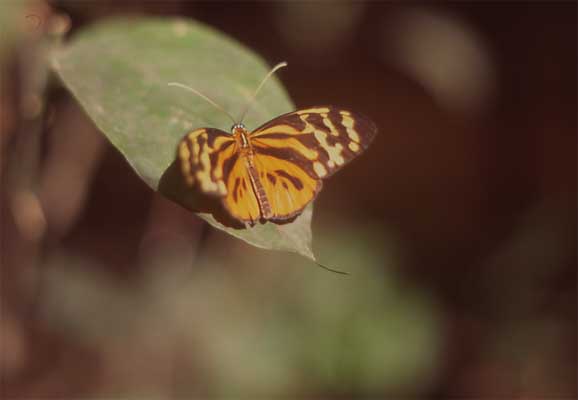LONGWING BUTTERFLIES
This group (Heliconiidae) of butterflies is very diverse, comprised hundreds of similar-looking species. These poisonous butterflies specialize on Passiflora (passion flower) plants. The pictures below show other species in the same family. The species are superficially similar due to a phenomenon called "Batesian mimicry." They are all poisonous, and the various species look similar so that potential predators come to recognize the colors. Hence, looking similar benefits all the species that share the colors. This evolutionary mechanism was first recognized among Amazon butterflies by English scientist Henry W. Bates. |
Click below to see the photos and information on leafcutter ants:
pair of longwing butterflies
longwing butterfly (1)
longwing butterfly (2)
PAIR OF LONGWING BUTTERFLIES
return to gallery
Here is a pair of longwing butterflies (Heliconius spp.) of two different species. Note how they share orange and black warning colors—for reasons outlined above. The species on the left is most likely Heliconius numata |
LONGWING BUTTERFLY (1)
return to gallery
See above for information on this type of butterfly, a type of Heliconid. This species is possibly a variety or race of Heliconius ismenius. |
LONGWING BUTTERFLY (2)
return to gallery
See above for information on this type of butterfly (unidentified). |
Learn about longwing butterflies natural history
previous photo
|
next photo
|
|---|




